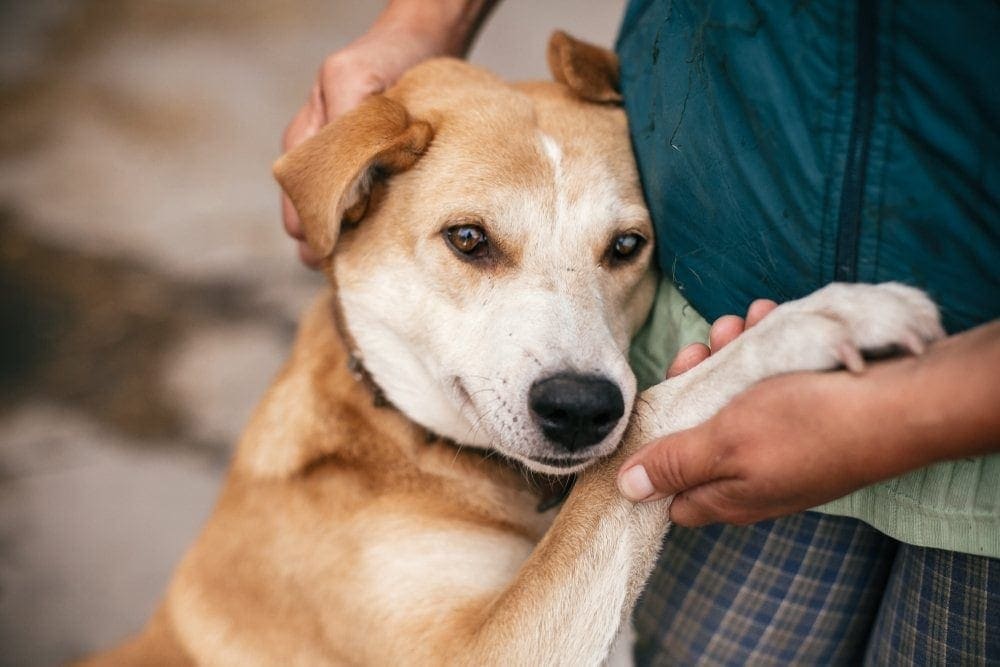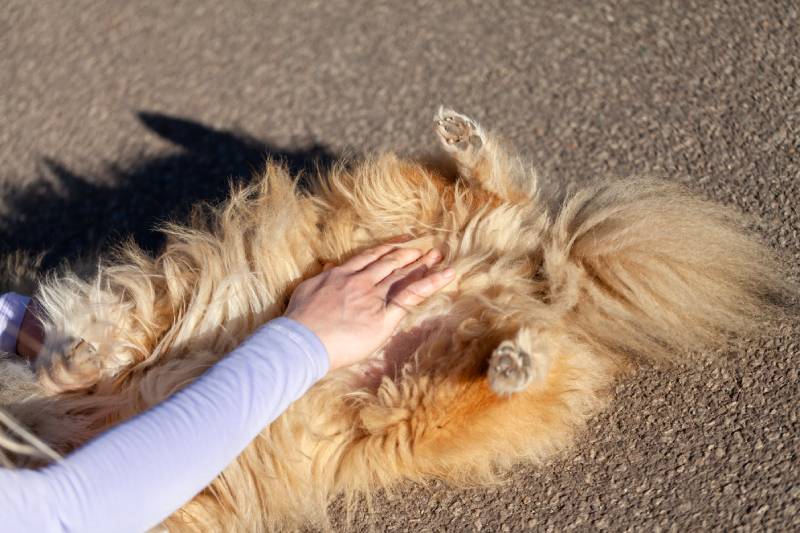Rhinitis and Sinusitis in Dogs: Causes, Signs, and Treatments (Vet Answer)

Updated on
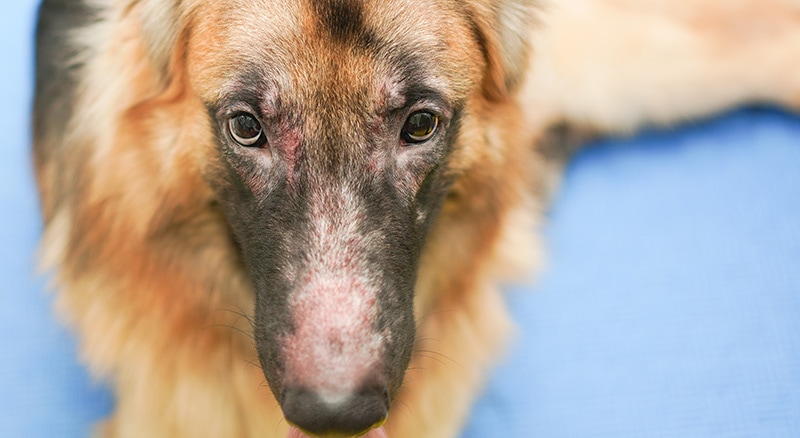
Have you ever struggled with a runny nose? What about blocked, painful sinuses, or even a tickle that leads to non-stop sneezing? These are common signs of rhinitis and sinusitis, and our dogs can suffer from them as well.
Infection, inflammation, physical irritation, and allergies are some of the things that can trigger these irritating, sometimes debilitating signs in our canine companions, and just like in humans, they might go away on their own, require antibiotics, or be a sign of something more worrying.
In the following article, we’ll take a closer look at the causes, signs, and treatments for rhinitis and sinusitis. But before we can do that, we need to understand what these conditions are.
What Are Rhinitis and Sinusitis?
Rhinitis refers to inflammation of the lining of the nasal passages. Sinusitis describes inflammation of the sinuses, which extend from the back of the nasal passages, up between the eyes, almost to the top of the skull. You can appreciate why a sinus infection can cause such a headache in humans! The nasal passages and sinuses are lined with a thin, delicate mucous membrane that contains microscopic hair-like structures called cilia1, which help mucous trap debris and move it toward the nostrils and out.
Rhinitis and sinusitis often occur together, but depending on the disease involved, one may be more pronounced than the other.
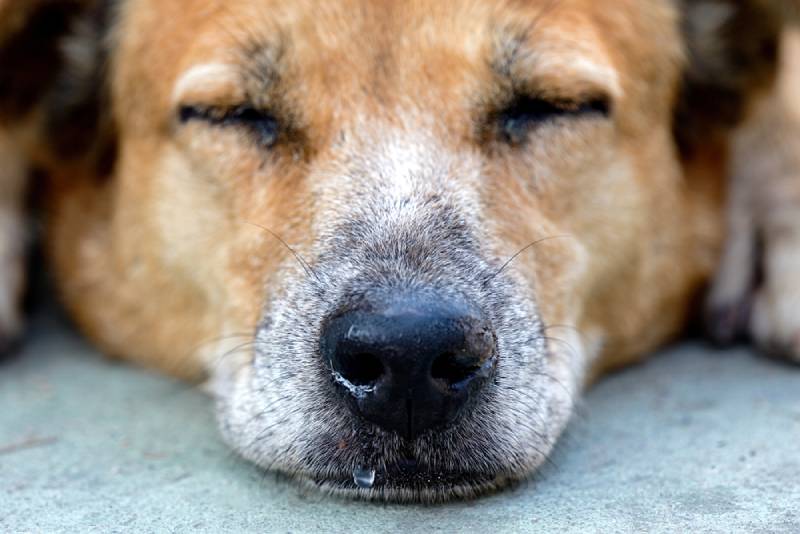
What Are the Signs of Rhinitis and Sinusitis?
Rhinitis can appear as sneezing, snoring, or difficulty breathing. Dogs may paw or rub their nose and you may see some clear or colored discharge. The discharge may be tinged with blood or they may have bleeding from their nose. Dogs with severe or chronic rhinitis may also have discoloration, depigmentation, crusting, or erosion of the skin of the nose (nasal planum).
Dogs suffering from sinusitis may show the same signs as well as lethargy, inappetence, depression, and a fever. They may also develop swelling and pain in their face.
Whether the swelling or discharge is on one side or both is an important part of diagnosing the disease, as it tells us more about the location and cause of the problem.
What Are the Causes of Rhinitis and Sinusitis?
As we mentioned above, rhinitis and sinusitis can occur together, usually when the disease process spreads from the linings of the nose to the linings of the sinuses. There are some diseases that will affect one more than the other, but in most cases, will be a result of the following disease processes.
Viral
The most common viral infections that affect canine nasal passages and sinuses are parainfluenza, distemper, and adenovirus. Fortunately, these are also among the viruses that dogs are routinely vaccinated against.
Distemper is the most concerning of these, with an infection potentially progressing through the respiratory, digestive, and nervous systems.
Treatment includes supportive care, such as the administration of fluids and anti-inflammatories, and dogs may be given antibiotics to prevent a secondary bacterial infection.
Infection with distemper is often fatal, with many dogs that recover having permanent nerve damage. Vaccination is effective, and the best way to prevent this infection.
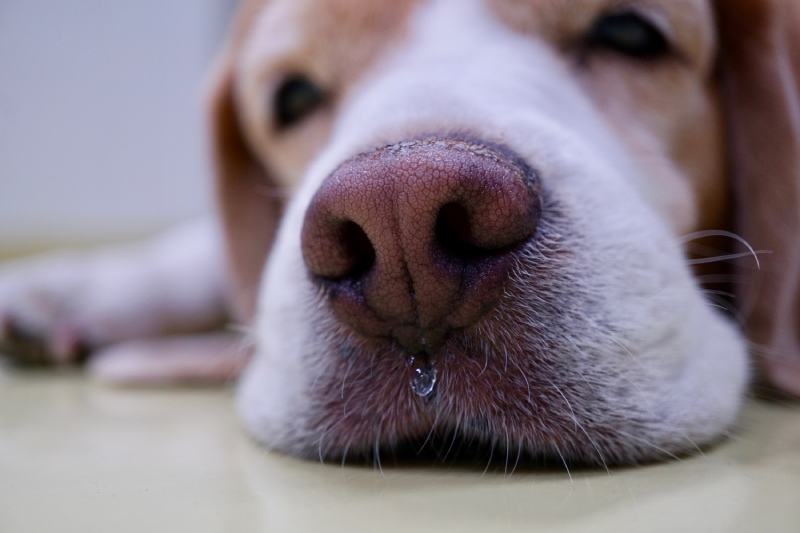
Bacterial
Bacterial sinusitis usually only occurs secondarily, after a viral infection or allergic reaction. A bacterial infection can also occur due to dental disease. The proximity of the upper tooth roots to the nasal sinuses means that infection of a tooth can spread into the sinuses.
Treatment requires the administration of systemic antibiotics, as well as treatment or management of the underlying problem.
Allergic
Much like hay fever in humans, dogs can be affected by allergens like pollen and dust. Although allergic sinusitis is a relatively benign condition, it can be severe in some individuals and can also predispose dogs to bacterial or fungal infections.
Treatment most commonly consists of antihistamine and anti-inflammatory therapy, as well as reducing exposure to allergens (e.g., reduced walking in windy weather or high pollen periods, regular vacuuming, etc.).

Foreign Body
Grass seeds, blades of grass, or other small objects can find their way into a dog’s nose and sinuses. This usually presents with a sudden onset of intense irritation of the nose, with dogs sneezing or rubbing at their muzzle. They may also develop a nasal discharge that may be bloody. Depending on the type of foreign body and its exact location, diagnosis can be very straightforward (visualizing the object with the naked eye or small speculum) or require a general anesthetic and imaging.
Treatment also depends on where the object is located but will usually involve an anesthetic to allow flushing of the sinuses or introducing forceps into the area to remove the offending material.
Fungal
Fungal infections of the nose and sinuses are most often caused by Aspergillus fungus invading the linings. This infection can also spread into the lungs and other body systems, known as disseminated aspergillosis. The spores of this fungus are found in the environment, mainly the soil. Most dogs will routinely eliminate these spores with the cilia/mucus mechanism in their nasal passages and sinuses, but those with a weakened immune system or damaged sinuses may become infected.
A common sign of aspergillosis is chronic nasal discharge that doesn’t respond to antibiotics. Dogs may also sneeze, have bloody noses, or crusty, bloody nostrils. Definitive diagnosis can be tricky.
Treatment of aspergillosis will depend on whether it is the nasal or disseminated form. In either case, high doses of systemic antifungal medications are needed for several months. Topical treatment of nasal aspergillosis can be quite effective and involves the flushing of the nasal passages with an antifungal preparation under sedation or anesthetic. The prognosis for dogs with disseminated aspergillosis is, unfortunately, often quite poor.

Neoplastic
There are several types of neoplasia (tumors/cancer) that can affect the nose and sinuses in dogs, and they can be benign or malignant. However, the location of these types of tumors makes treatment or removal challenging, so even benign neoplasms can have a poor prognosis.
Treatment may involve a combination of surgery/cryosurgery, radiation therapy, or chemotherapy, with varying degrees of success.
Summing Up
Rhinitis and sinusitis in dogs involve a wide range of disease processes, from simple allergies to more devastating cancer or fungal infections. With this in mind, any discharge, swelling, discomfort, or crusting of the nose should be treated with caution and investigated by your veterinarian. For many of these conditions, early diagnosis and treatment will have a significant impact on the long-term comfort and survival of your beloved canine companion.
It is important to book a checkup with your vet for any nasal issues that persist longer than 48 hours, or sooner if your dog is in distress. It is far better to find out that it’s nothing to worry about rather than to delay and lose a valuable head start on treatment.
Featured Image Credit: Vach cameraman, Shutterstock








